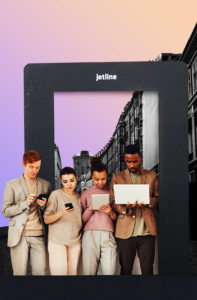DOOH as the Future of Advertising
 When deciding to buy a new TV or toothbrush, considering whether to support a social initiative, or choosing an evening show, people increasingly reach for their smartphones to seek opinions. On the other hand, besides searching through posts, recommendations, and comments from other users, they also leave traces of what they do and how they rate various services or places.
When deciding to buy a new TV or toothbrush, considering whether to support a social initiative, or choosing an evening show, people increasingly reach for their smartphones to seek opinions. On the other hand, besides searching through posts, recommendations, and comments from other users, they also leave traces of what they do and how they rate various services or places.
Other consumers are becoming authorities for consumers. Their experience, knowledge, opinion, and feelings matter more than the manufacturer's own assurances about the level and quality of their services. Therefore, building relationships with customers has become a key factor affecting the success of marketing strategies for various brands. DOOH (digital out of home) advertising is a tool that significantly facilitates this task.
UGC - user-generated content
Using UGC (User Generated Content) in creating advertisements is a huge advantage that DOOH has over traditional OOH advertising. By connecting with apps and mobile device location systems, interactive advertising screens can immediately adapt the presented content to the expectations of a specific audience group. DOOH allows for establishing contact with customers considering their personal preferences. Such highly personalized marketing is a breakthrough in promotion planning and a great opportunity to reach service recipients.
RT - here and now
Real-time marketing is another advantage of DOOH. The displayed content can now be tailored not only to the audience group itself but also to the time of day, weather, or current events. Digital screens placed at strategic points will allow you to reach interested people and naturally remind them that it's time for lunch, which happens to be offered by the café around the corner.
DOOH advertisements use mobile applications, artificial intelligence, and advanced data analysis. Thanks to modern technologies, they allow for achieving a different dimension in communicating with customers. Personalized and precise messaging evokes emotions and engages audiences. In this way, these activities support building relationships with consumers - similar to what happens during personal meetings.
